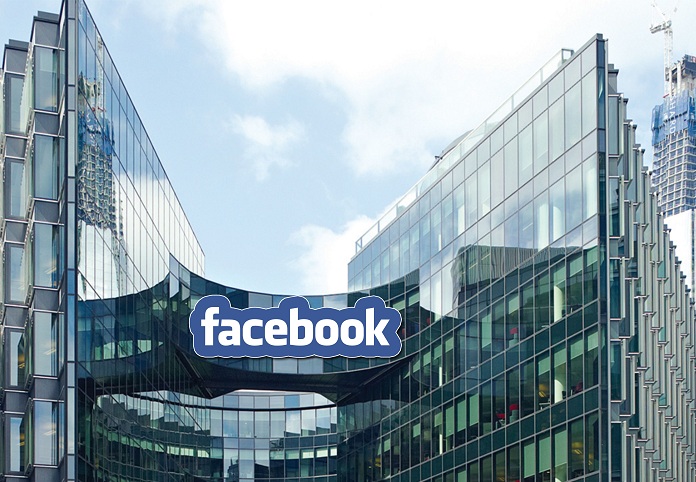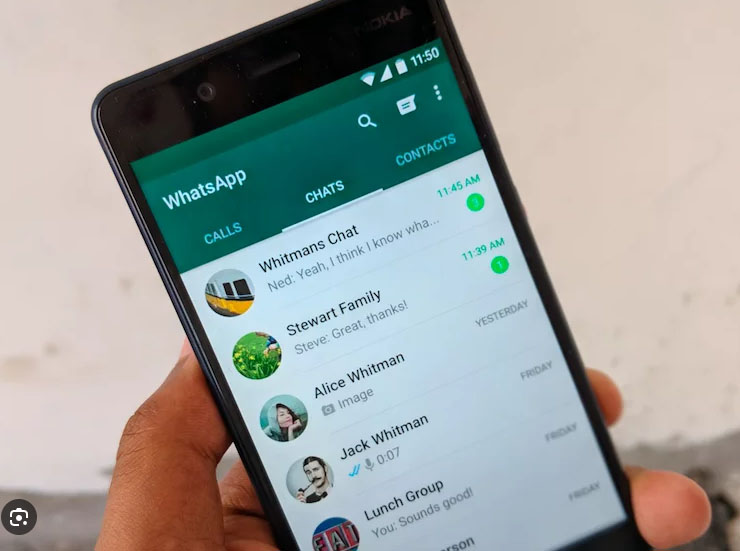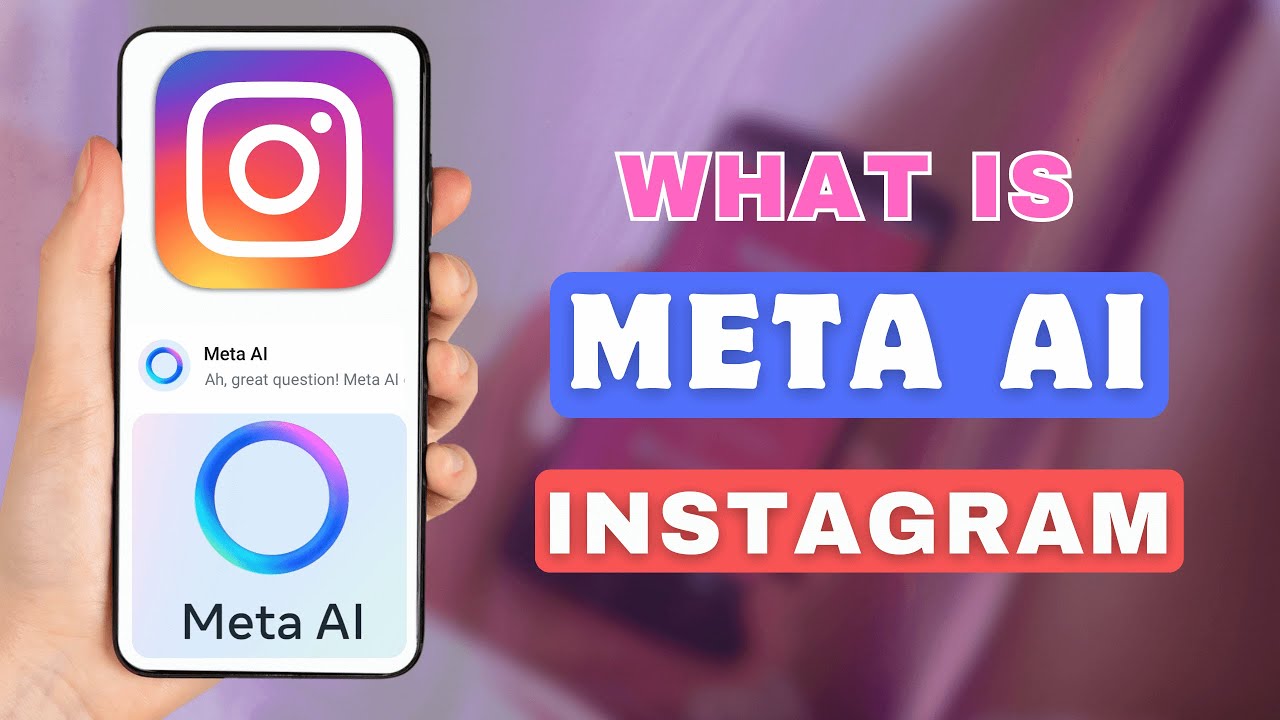Tech
Facebook employees allowed to work from home until July 2021

Facebook has joined Google in saying it will allow employees to work from home until the middle of next year as a result of the coronavirus pandemic.
“Based on guidance from health and government experts, as well as decisions drawn from our internal discussions about these matters, we are allowing employees to continue voluntarily working from home until July 2021,” a spokeswoman told the Reuters news agency.
Facebook also said it will provide employees with an additional $1,000 to spend on “home office needs.”
Late last month Google also extended its coronavirus remote work provision, saying staff would be able to continue working from home until the end of June 2021.
Both tech giants have major office presences in a number of cities around the world. And despite the pandemic forcing them into offering more flexible working arrangements than they usually do, the pair have continued to build out their physical office footprints, signaling a commitment to operating their own workplaces.
Earlier this month, Facebook secured the main office lease on an iconic building in New York, for example — adding 730,000 square feet to its existing 2.2 million square feet of office space. Google has continued to push ahead with a flagship development in the U.K. capital’s King’s Cross area, with work resuming last month on the site for its planned London “landscraper” HQ.
In late July, Apple said staff won’t return to offices until at least early 2021 — cautioning that any return to physical offices would depend on whether an effective vaccine and/or successful therapeutics are available. So the iPhone maker looks prepared for a home-working coronavirus long haul.
As questions swirl over the future of the physical office now that human contact is itself a public health risk, the deepest pocketed tech giants are paradoxically showing they’re not willing to abandon the traditional workplace altogether and go all in on modern technologies that allow office work to be done remotely.
Twitter is an exception. During the first wave of the pandemic the social network firmly and fully embraced remote work, telling staff back in May that they can work from home forever if they wish.
Whether remote work played any role in the company’s recent account breach is one open question. It has said phone spear phishing was used to trick staff to gain network access credentials.
Certainly, security concerns have been generally raised about the risk of more staff working remotely during the pandemic — where they may be outside a corporate firewall and more vulnerable to attackers.
A Facebook spokeswoman did not respond when we asked whether the company will offer its own staff the option to work remotely permanently. But the company does not appear prepared to go so far — not least judging by signing new leases on massive office spaces.
Facebook has been retooling its approach to physical offices in the wake of the COVID-19 pandemic, announcing in May it would be setting up new company hubs in Denver, Dallas and Atlanta.
It also said it would focus on finding new hires in areas near its existing offices — including in cities such as San Diego, Portland, Philadelphia and Pittsburgh.
Facebook CEO Mark Zuckerberg said then that over the course of the next decade half of the company could be working fully remotely. Though he said certain kinds of roles would not be eligible for all-remote work — such as those doing work in divisions like hardware development, data centers, recruiting, policy and partnerships.
Tech
ഇനി മെസേജ് കണ്ടില്ലെന്ന് പറയരുത്; സ്ക്രോള് ചെയ്ത് ബുദ്ധിമുട്ടേണ്ട, വാട്സ്ആപ്പില് ചാറ്റുകള് എളുപ്പത്തില് കണ്ടെത്താം

ന്യൂഡല്ഹി: ഉപയോക്താക്കള്ക്ക് എളുപ്പത്തില് ചാറ്റുകള് കണ്ടെത്തുന്നതിനുള്ള ഫീച്ചറുമായി വാട്സ്ആപ്പ്. പുതിയ ഫീച്ചര് എത്തിയതോടെ ഇന്ബോക്സിലൂടെ സ്ക്രോള് ചെയ്യാതെ തന്നെ പ്രധാനപ്പെട്ട സന്ദേശങ്ങള് വേഗത്തില് കണ്ടെത്താന് സാധിക്കും.
ചാറ്റ് ഫില്ട്ടറുകളോടെയാണ് പുതിയ അപ്ഡേറ്റ് ഉപയോക്താക്കളിലേക്ക് എത്തുന്നത്. ഫില്ട്ടറുകള് ഇന്ന് മുതല് ഉപയോക്താക്കള്ക്ക് ലഭ്യമാകും. തുടര്ന്നുള്ള ആഴ്ചകളില് എല്ലാവര്ക്കും ഫീച്ചര് ലഭ്യമാകും. പുതിയ ഫില്ട്ടറുകളുടെ സഹായത്താല് ഏറ്റവും പ്രധാനപ്പെട്ട സംഭാഷണങ്ങള് കണ്ടെത്താനും സന്ദേശങ്ങള് കൂടുതല് കാര്യക്ഷമമാക്കാനും സഹായിക്കുമെന്ന് വിശ്വസിക്കുന്നതായി വാട്സ്ആപ്പ് അറിയിച്ചു.
അഡ്രസ് ബുക്കില് സേവ് ചെയ്തിരിക്കുന്ന മൊബൈല് നമ്പറുകളില് നിന്ന് ലഭിക്കുന്ന സന്ദേശങ്ങള് കാണാന് ഉപയോക്താക്കളെ അനുവദിക്കുന്ന ”കോണ്ടാക്ട്സ്” പോലുള്ള ഫില്ട്ടറുകള് പരീക്ഷണ ഘട്ടത്തിലാണെന്നും വാട്സ്ആപ്പ് അറിയിച്ചു.
ചാറ്റ് ഫില്ട്ടറുകള് എങ്ങനെയാണ് പ്രവര്ത്തിക്കുന്നത് ?
ഉപയോക്താക്കള്ക്ക് അവരുടെ ചാറ്റ് ലിസ്റ്റിന്റെ മുകളില് ദൃശ്യമാകുന്ന മൂന്ന് ഫില്ട്ടറുകള് തെരഞ്ഞെടുക്കാനാകും.
‘ഓള്ം’, ‘അണ്റീഡ്’, ‘ഗ്രൂപ്പ്സ്’ എന്നിവയാണ് പുതിയ ഫില്ട്ടറുകള്
‘ഓള്’ ഫില്ട്ടര് ഡിഫോള്ട്ടായിരിക്കും. ഉപയോക്താക്കള്ക്ക് എല്ലാ സന്ദേശങ്ങളും ഇന്ബോക്സില് കാണാം?
‘അണ്റീഡ്’ ഫില്ട്ടര്, ഉപയോക്താവ് വായിക്കാത്തതോ ഇതുവരെ തുറക്കാത്തതോ ആയ സന്ദേശങ്ങളാണ് കാണിക്കുക
‘ഗ്രൂപ്പ്’ ഫില്ട്ടര് എല്ലാ ഗ്രൂപ്പ് ചാറ്റുകളും ഒരിടത്ത് ക്രമീകരിക്കും, ഇത് ഉപയോക്താക്കളെ അവരുടെ എല്ലാ ഗ്രൂപ്പ് സന്ദേശങ്ങളും എളുപ്പത്തില് കാണാന് സഹായിക്കും.
Sources:azchavattomonline.com
Tech
വന്നു ഇൻസ്റ്റഗ്രാമിലും എഐ; ഇനി എന്തും ചോദിക്കാം, ഒറ്റ ക്ലിക്കിൽ എഐ തരും ഉത്തരം

ഇൻസ്റ്റഗ്രാമിലും അങ്ങനെ എഐ എത്തി. പുതിയൊരു മാറ്റത്തിന് തന്നെ തുടക്കം കുറിച്ചിരിക്കുകയാണ് മെറ്റ എഐ. എന്താണ് മെറ്റ എഐ എന്ന് അറിയണ്ടെ? മറ്റെല്ലാ പ്ലാറ്റ്ഫോമുകളെയും പോലെ ഇനി മുതൽ ഇൻസ്റ്റഗ്രാമിലും ഉണ്ട് എഐ. ഇനിമുതൽ ചിത്രങ്ങളോ സ്റ്റിക്കേഴ്സോ വേണമെങ്കിൽ എഐ ഞൊടിയിടയിൽ തരും. ഇൻസ്റ്റഗ്രാം സെർച്ച് ബാറിൽ ഇനി മുതൽ എഐ ഐക്കൺ ഉണ്ടാകും. അതിൽ ക്ലിക്ക് ചെയ്ത് നിങ്ങൾക്ക് എന്താണോ ആവശ്യമുള്ളത് അത് എഐയോട് ചോദിക്കാം.
ഉദാഹരണത്തിന് ഒരു മലയാളി കുട്ടിയുടെ ചിത്രമാണ് വേണ്ടതെങ്കിൽ /IMAGE OF A MALAYALI GIRL . അല്ലെങ്കിൽ മരുഭൂമിലെ മഴ കാണണോ അതും തരും എഐ / image rain in desert എന്ന് കൊടുത്താൽ വരും നല്ല കിടുക്കൻ എഐ ഫോട്ടോ…സെർച്ച് ബാറിലെ ‘മെറ്റ എഐ’ ഐക്കണിൽ ടാപ്പ് ചെയ്ത് ഇത് ആക്സസ് ചെയ്യാൻ കഴിയും. മാത്രമല്ല ഒരു സുഹ്യത്തിനെ പോലെ എഐയോട് സംസാരിക്കാനും പറ്റും. എന്ത് സംശയം ചോദിച്ചാലും പറഞ്ഞ് തരും. മെറ്റ ജനറേറ്റീവ് എഐ എന്നത് ഒരു ഡാറ്റാബേസോ സ്റ്റാറ്റിക് വിവരശേഖരമോ അല്ല, മറിച്ച് ഒരു തരം കമ്പ്യൂട്ടർ മോഡലാണ്.
ടെക്സ്റ്റുകളും ചിത്രങ്ങളും സൃഷ്ടിക്കാനും, ദൈർഘ്യമേറിയ വാചകങ്ങൾ സംഗ്രഹിക്കാനും, പ്രൂഫ് റീഡിങ്, എഡിറ്റിങ്, ടെക്സ്റ്റ് ഒരു ഭാഷയിൽ നിന്ന് മറ്റൊന്നിലേക്ക് വിവർത്തനം ചെയ്യൽ, കവിതകളും കഥകളും സൃഷ്ടിക്കൽ തുടങ്ങിയ കാര്യങ്ങളിൽ സഹായിക്കാനും മെറ്റ എഐക്ക് കഴിയും.
Sources:NEWS AT TIME
Tech
വാട്സാപ് ഉപയോഗിക്കുന്നതിനുള്ള പ്രായപരിധി കുറച്ചതിൽ വ്യാപക വിമർശനം

ലണ്ടൻ : വാട്സാപ് ഉപയോഗിക്കുന്നതിനുള്ള പ്രായപരിധി 16ൽ നിന്ന് 13 ആയി കുറച്ചതിൽ വ്യാപക വിമർശനം. ഫെബ്രുവരിയിൽ മെറ്റ പ്രഖ്യാപിച്ച മാറ്റം ബുധനാഴ്ച മുതൽ യുകെയിലും യൂറോപ്യൻ യൂണിയനിലും നിലവിൽ വന്നിരുന്നു. മെറ്റയുടെ നടപടിയെ സ്മാർട്ട്ഫോൺ ഫ്രീ ചൈൽഡ്ഹുഡ് എന്ന ഗ്രൂപ്പ് രൂക്ഷമായി വിമർശിച്ചു. ലാഭം മാത്രമാണ് വാട്സാപ്പിന്റെ ലക്ഷ്യമെന്നും കുട്ടികളുടെ സുരക്ഷയും മാനസികാരോഗ്യവും അവർക്ക് രണ്ടാമതുമാണെന്ന് സഹസ്ഥാപകയായ ഡെയ്സി ഗ്രീൻവെൽ പറഞ്ഞു. നിരവധി മനഃശാസ്ത്രജ്ഞർ, ഡോക്ടർമാർ, അധ്യാപകർ, രക്ഷിതാക്കൾ എന്നിവരും ആശങ്ക പങ്കുവയ്ക്കുന്നുണ്ട്. എന്നാൽ ഭൂരിപക്ഷം രാജ്യങ്ങളിലെയും പ്രായപരിധിക്ക് അനുസൃതമായാണ് മാറ്റം കൊണ്ടുവന്നതെന്നും ഇതു സംബന്ധിച്ച് മാനദണ്ഡങ്ങൾ നിലവിലുണ്ടെന്നുമാണ് വാട്സാപ്പിന്റെ നിലപാട്.
അതേസമയം, മെറ്റയുടെ തന്നെ ഉടമസ്ഥതയിലുള്ള ഫെയ്സ്ബുക്കും ഇൻസ്റ്റഗ്രാമും നഗ്നത, ലൈംഗിക ചൂഷണ എന്നിവ തടയുന്നതിനുള്ള പുതിയ ഫീച്ചറുകൾ പ്രഖ്യാപിച്ചു. ഡയറക്ട് മെസേജുകളിൽ ‘നഗ്നത’ ഉണ്ടെങ്കിൽ ബ്ലർ ആകുന്ന ഫീച്ചറാണ് ഇൻസ്റ്റഗ്രാമിൽ മെറ്റ അവതരിപ്പിച്ചത്. ലൈംഗിക തട്ടിപ്പുകളെയും മറ്റു തരത്തിലുള്ള ഇമേജ് ദുരുപയോഗങ്ങളെയും ചെറുക്കുന്നതിനും കൗമാരക്കാരുമായി കുറ്റവാളികൾ ബന്ധപ്പെടുന്നത് തടയുന്നതിന്റെയും ഭാഗമായി ഫീച്ചറുകൾ പരീക്ഷണഘട്ടത്തിലാണെന്ന് മെറ്റ അറിയിച്ചു. ലൈംഗികത തടയാൻ ഇൻസ്റ്റാഗ്രാമും മറ്റു സമൂഹമാധ്യമ കമ്പനികളും വീഴ്ച വരുത്തുന്നതിൽ വ്യാപക വിമർശനം നേരിടുന്നുണ്ട്. മെറ്റ സിഇഒ മാർക്ക് സക്കർബർഗ് ഈ വർഷമാദ്യം യുഎസ് സെനറ്റ് ഹിയറിങ്ങിനിടെ ലൈംഗിക ദുരുപയോഗത്തിന് ഇരയായവരുടെ മാതാപിതാക്കളോട് ക്ഷമാപണം നടത്തിയിരുന്നു.
Sources:globalindiannews
-

 us news10 months ago
us news10 months agoനോർത്ത് അമേരിക്കൻ പെന്തക്കോസ്തൽ റൈറ്റേഴ്സ് ഫോറം : രാജൻ ആര്യപ്പള്ളി പ്രസിഡന്റ്; നിബു വെള്ളവന്താനം സെക്രട്ടറി
-

 us news8 months ago
us news8 months agoനോര്ത്ത് അമേരിക്കന് പെന്തക്കോസ്തല് റൈറ്റേഴ്സ് ഫോറം; അറ്റ്ലാന്റാ ചാപ്റ്ററിന് പുതിയ ഭാരവാഹികള്
-

 us news11 months ago
us news11 months ago‘The Biggest Water Baptism in History’: 4,166 Baptized at Historic Beach from Jesus Movement
-

 world news11 months ago
world news11 months agoMuslim Husband Found Out His Wife Became a Christian; He Beat Her, Starved Her and Left Her in a Wild Animal Park—But God…
-

 National8 months ago
National8 months agoബൈബിൾ വിതരണം ചെയ്യുന്നതും നല്ല മൂല്യങ്ങൾ പഠിപ്പിക്കുന്നതും മതപരിവർത്തനമല്ല: അലഹബാദ് ഹൈക്കോടതിയുടെ നിര്ണ്ണായക വിധി
-

 world news9 months ago
world news9 months ago37 Christians Killed in Nigeria in Three Weeks
-

 world news11 months ago
world news11 months agoലേലത്തിൽ വെച്ചിരുന്ന ലോകത്തിലെ ഏറ്റവും പഴക്കമുള്ള ഹീബ്രു ബൈബിളിന് റെക്കോര്ഡ് തുക: ലഭിച്ചത് 314 കോടിരൂപ
-

 world news11 months ago
world news11 months agoയുഎഇ യിൽ ക്രൈസ്തവ ആരാധനാലയങ്ങൾക്ക് ഇനി ലൈസൻസ് നിർബന്ധം























